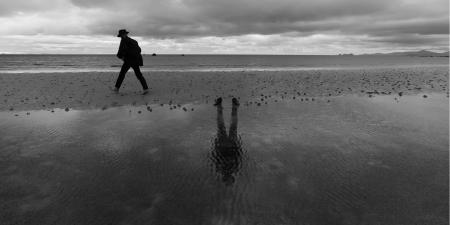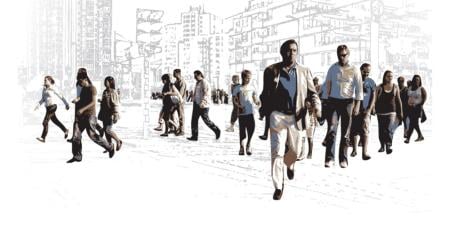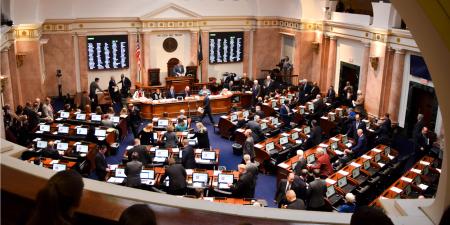Case
George has lived in rural Georgia for all of his life, third in a family of 7 siblings. He started his own business building houses in his community, and is something of a legend for his kind manner and generosity—"pay us when you can" is a sentence frequently out of his mouth. A portly, balding man of 50, now he supervises more than works on the construction site and presides over his family of 2 daughters and his wife.
One day, George was walking on the frame of the second floor of a large house he was building for people from the city. As his foreman Jim tells it, "I turned around and he was gone." Jim recalls a horrifying moment when he finally saw George lying prone 2 floors below. Jim sent someone for the doctor and tended to George until help arrived.
Dr. Wolcott, an internist and longtime resident of the community, was the first to arrive, and an ambulance came soon after. She accompanied George to the hospital where tests showed that George had suffered a heart attack and subsequent head trauma from the fall with brain swelling due to an intracranial hemorrhage. George was taken by helicopter to a regional trauma center where he was stabilized and put on a ventilator. Later a feeding tube was inserted.
After a week went by, George's family and Dr. Wolcott requested a transfer to their community hospital, so they could be near to George and Dr. Wolcott could monitor his recovery. Dr. Wolcott initially assured them that once the swelling receded, George would recover consciousness, based on what she was told at the hospital by the neurologist who examined George's brain scans.
As the weeks turned into months, however, Dr. Wolcott became more and more convinced that George would not make the recovery she was hoping for and requested a second consult by another neurologist from the city hospital. After fully examining George, the neurologist found that the damage to his brain was more extensive than previously thought and told Dr. Wolcott that George was in a persistent vegetative state (PVS) and unlikely to regain consciousness. Dr. Wolcott broke the difficult news to George's family and counseled them through the process of deciding how to proceed. They agreed with Dr. Wolcott that if George wasn't going to recover consciousness he wouldn't want to be kept alive indefinitely, which he would view as being a burden to his family.
George's family were also members of an influential church community. They asked that the community pray for them and the difficult decision they were making to remove George's life support, a plea that provoked both sympathy and outrage among the large congregation. One member went so far as to contact local television stations about the case, resulting in national media attention. Another, an emergency physician, saw George on television and concluded that the consulting neurologist's findings had to be mistaken. He lobbied the media and George's family to get more specialists to examine him. George's family were left somewhere in the middle, relentlessly tugged by those who wanted them to let George go and those who thought this action was unethical at the least and possibly tantamount to murder.
Dr. Wolcott was unwittingly caught in the public limelight, being asked whether she had advised the family to "pull the plug."
Commentary 1
Let's begin by identifying the stakeholders and the other influential actors in this case. Their comments, actions, and beliefs drive the conflict that is pitting community against family and physician against physician. First, and above all, there is George. It bears emphasis that George's welfare and any of his previously expressed beliefs about life support in the setting of grave illness must remain central to any discussion about what constitutes appropriate medical care. Next, there are George's family and Dr. Wolcott; the people in George's life who are now obligated to make medical decisions in concert for George, since he has lost decisional capacity. Finally, there is the community, or, more precisely, 2 communities. There is the intimate, face-to-face community in which George and his family live, which includes the members of their church. There is also the "community" of the general public created by media attention that has taken an interest in this case.
Central Tensions
There are 2 central tensions in this case. First, there is conflict over who is speaking for George's best interest. Dr. Wolcott and George's family have the legal authority to determine what constitutes appropriate medical care for George, and they have an ethical duty to abide by George's treatment preferences as expressed prior to his injury. They have developed a plan to withdraw life support that is predicated on: (1) the consulting neurologist's diagnosis of persistent vegetative state and the prognosis that George is not likely to regain consciousness, and (2) the family's understanding of George's treatment preferences. Tension has evolved because some members of the local faith community and general public have expressed strongly held beliefs that conflict with the family's and physician's plan. Members of the community have challenged both the premise for the decision to withdraw life support and the act itself, arguing that Dr. Wolcott and the family are developing a plan that is based on incorrect information ("the neurologist's findings had to be mistaken") and that it is not ethical to withdraw life support.
A second central tension in this case is uncertainty about the physician's role in the public conflict. What are Dr. Wolcott's obligations, if any, to become embroiled in the public debate about George and to attempt to defuse the conflict?
Dr. Wolcott's Roles
Legal obligations. Dr. Wolcott's principal obligation is to George. She has a contractual obligation to provide standard medical care consistent with her patient's treatment preferences. Although George did not prepare an advance directive detailing his treatment preferences in the setting of grave illness, he did provide cues to his family and physician that if he were irreversibly gravely ill he would not want to be kept alive indefinitely. George did not appoint a durable power of attorney for health care before his injury; but he does have engaged family members who are empowered legally and ethically to act as his surrogates for medical decisions.1,2 In this setting, it is the responsibility of the patient's surrogates to make decisions, in concert with the treating physician, by the method of substituted judgment. The standard of substituted judgment dictates that the surrogate must act in accordance with the patient's known or likely preferences. The decisions need not be in agreement with either the proxy's personal preferences nor those of the physician. Dr. Wolcott must abide by these treatment preferences, unless they are in conflict with her own values, in which case she would be obligated to assist the family in finding another physician for George.3,4
Family-centered care. Does Dr. Wolcott have obligations beyond those to George? There are evolving expectations that the health care team should attend to the needs of the family in end-of-life care.4-6 Principles of family-centered care include showing dignity and respect for patient and family, information sharing, family participation in case management, and collaborative decision making.
The family's announcement to the community of its decision to withdraw life support has created special tensions and conflict for the family. The principle of family-centered end-of-life care compels Dr. Wolcott to provide the family with emotional support that should include displays of empathy for the criticism and ostracism the family may be experiencing and also for the ambivalence, guilt, and fear they may be feeling as a consequence of their decision.
Dr. Wolcott should provide continuing assurance that the family's decision is what George would have wanted and, therefore, is ethically sound, as well as legal. Dr. Wolcott should assure the family that she and they have done everything possible to bring comfort and dignity to George, including respecting his autonomy by adhering to all of his treatment preferences. Dr. Wolcott's support of the family's emotional well-being will help the family find solace in their decisions and reach emotional closure when George dies.
Addressing conflict in the community. It should come as no surprise that members of both the local community and larger public have different opinions as to what constitutes ethical care of George or of any person in a persistent vegetative state. Dr. Wolcott has several options in addressing conflict in the community. These include empowering the family to educate critics of the basis for their decision to withdraw life support. Specifically, Dr. Wolcott can advise the family to communicate: (1) The treatment preferences that George expressed prior to the injury, (2) the thoughtful deliberation that preceded the decision to withdraw life support, (3) the extended time period over which events have unfolded and (4) George's lack of progress over this period of time, and (5) the concurrent opinions of qualified physicians including a neurologist, who have examined George, that there can be no expectation of meaningful recovery as George would want.
With permission of George's family, Dr. Wolcott could volunteer to speak to a church leader (eg, minister) about the care George has received and the basis for the plan to withdraw life support. She can communicate essential information to the church leader about George's status, prognosis, and wishes. This, in turn, may empower church leaders to address conflict within the faith community about the family's difficult decision. The church leader's moral authority within the church may facilitate "getting the message out" that George is being treated with dignity, respect, and in accordance with his wishes.
Finally, there is the larger community of the general public, including the television audience. If the family wishes to address this audience, Dr. Wolcott may extend her support through a public announcement that reviews the challenges of the case and the decision-making rationale.
The Emergency Physician's Opinion and Behavior
The emergency physician's judgment and motivations can be questioned. He has displayed prejudicial behavior, literally prejudging George's status based on the incomplete information of a television report, thereby undermining his credibility and moral standing in this case. Absent a professional or personal relationship with George that trumps that of other physicians or family members, he lacks both legal and ethical authority to make decisions about the next best course of care. His behavior has contributed to family tension, which is in conflict with the principles of family-centered care. Even if the emergency physician had special expertise in traumatic brain injury, the above mitigating factors constrain him from rendering a definitive conclusion about the quality of health care George is receiving.
Finally, physicians have an ethical obligation not to undermine the reputation and professional standing of another physician without cause. The emergency physician's public criticism of the neurologist's assessment is inconsistent with this precept.
Physician commentary on diagnosis, prognosis, and treatment of disorders should be limited to areas of expertise. Medical expertise is predicated on sufficient education, training, and experience in a medical discipline. Opinions about ethical matters and articulation of personal values and beliefs should be distinguished from commentary on the medical facts of a case. A physician is entitled to discuss an ethical matter outside of his or her specialty, provided a clear distinction is made between the ethical issue being discussed and the medical facts and opinions of a case.
References
-
Annas GJ. The health care proxy and the living will. N Engl J Med. 1991;324:1210-1213.
- Lang F, Quill T. Making decisions with families at the end of life. Am Fam Physician. 2004;70(4):719-723.
-
Ending the patient-physician relationship. American Medical Association, Office of the General Counsel. Available at: http://www.ama-assn.org/ama/pub/category/4609.html. Accessed September 27, 2005.
-
Snyder L, Leffler C for the Ethics and Human Rights Committee, American College of Physicians. Ethics manual, 5th ed. Ann Intern Med. 2005;142(7):560-582.
- Truog RD, Cist AFM, Brackett SE, et al. Recommendations for end-of-life care in the intensive care unit: The Ethics Committee of the Society of Critical Care Medicine. Crit Care Med. 2001;29(12):2332-2348.
- Rabow MW, Hauser JM, Adams J. Supporting family caregivers at the end of life: "They don't know what they don't know". JAMA. 2004;291(4):483-491.



